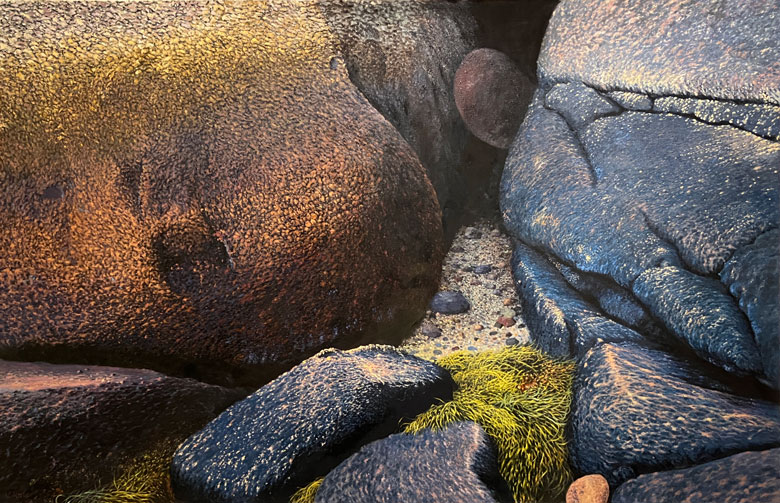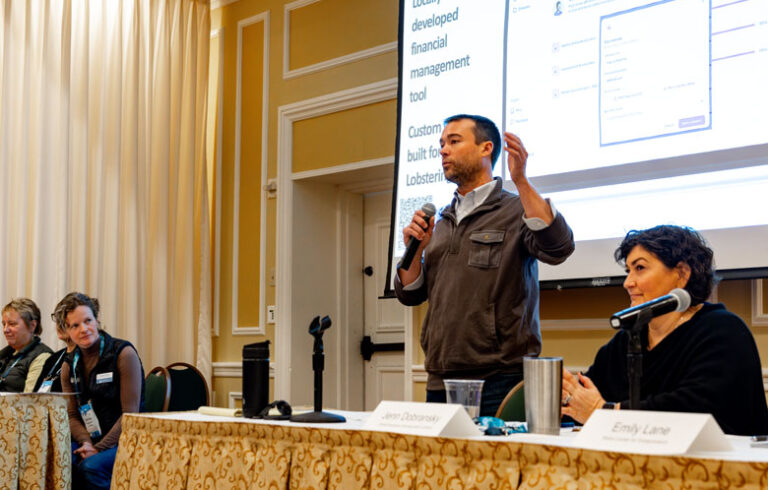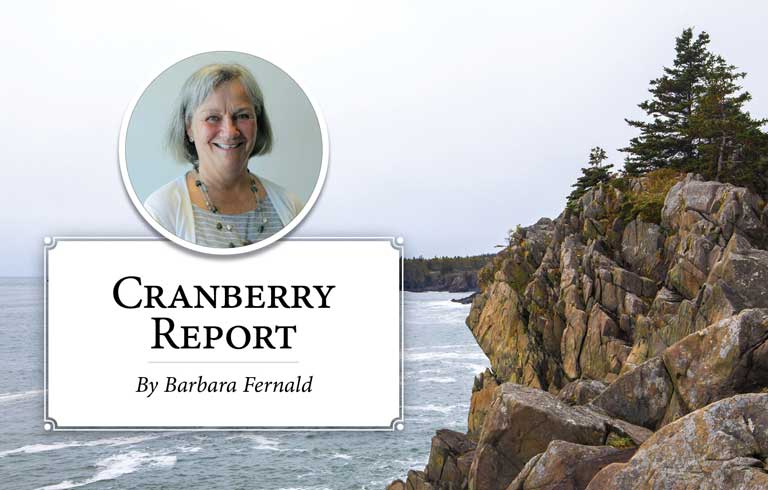Vaino Kola settles onto a loveseat in his home overlooking Deer Isle’s Greenlaw Cove, where an ocean swirl kisses an outcropping of rocks. Pointing to a small rock on the shore, a mischievous gleam in his eye, Kola says, “See the golden top on that boulder? That’s the rock in ‘Shore rocks/Snow and Ice.’”
In Kola’s painting of a frigid, windswept, forsaken landscape, that gold-domed rock centers the outcropping, looking almost volcanic in size. Laughing, he says, “It was my model. I choose my paintings because I see something that’s beautiful. Nature is beautiful, but artistically it’s not always right. You have to move things around.”
Kola’s connection to nature and his ability to rearrange it, always in meticulous detail, led George Kinghorn, director and curator of the University of Maine’s Zillman Art Museum in Bangor, to host a one-person exhibit of Kola’s elegant prints and large oils through Aug. 24. The show’s title, “Living Here Feels Like I’m in my Homeland, Finland,” reflects much of Kola’s artistic passion: to experience nature fully, render it in his way, and connect, always, to his childhood in Finland.
Though Kola, now 87, left Europe at age 13, Finland is his touchstone. For 12 years, he and his wife Marcia searched the Northeast for a place connecting him to Finland. Deer Isle was it. A Finnish soapstone stove centers their home; a sauna sits outside.
“We’ve created a bit of Finland here and I feel like I’m home,” he says.
While Finland remains Kola’s idyl, wars trampled his childhood. He was just 2 years old when conflict with the Soviet Union caused Kola’s father to send his wife and children to family in the Arctic Circle. Fascinated by the reindeer pawing through their yard, Kola began drawing.
Paintings of rocks along Deer Isle’s Mill Pond turn subtle slate-blue boulders covered with green lichen into brilliant hues.
At 7, he and a sister were among 80,000 Finnish children sent to Sweden to escape World War II. Traumatic? No! “We had so much fun,” Kola says. Unable to speak Swedish, his teacher fed him stacks of papers and he drew. Back home, the drawings morphed into battle scenes, the Finnish planes downing Russian aircraft. Summer and winter, he and friends trekked through the woods, building shacks, playing games. They also came together to draw.
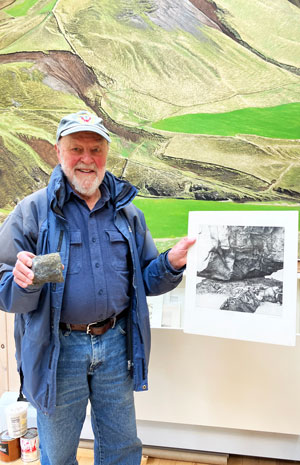
Though Finnish, Kola’s parents met in the U.S. before returning home. Kola remembers his mother, a Julliard-trained musician, longingly singing songs like “Smoke Gets in Your Eyes,” until the family finally sailed to New England, settling near family in Worcester, Mass. Kola found it ugly. Dirty. But he also found the Boys’ Club, where both his artwork and his athletics were praised. His mother was also a fervent supporter, only by the time Kola was 15, she was in a hospital, dying of cancer. He’d visit daily, always with artwork in hand.
Soon he was off to Massachusetts College of Art and Design. At a summer job, he met Marcia Soden. In 1962, a Yale MFA in his hand, they married.
By 1969 the family, now numbering four, settled in Norton, Mass., where Kola became a tenured professor of painting and printmaking at Wheaton College. Marcia, a potter, taught nearby. Visits to Scandinavia punctuated their lives. Having found Deer Isle, the Kolas retired there in 1993, and Kola began painting fulltime.
Kola sees his work as a marriage between abstraction and representation. Paintings of rocks along Deer Isle’s Mill Pond turn subtle slate-blue boulders covered with green lichen into brilliant hues. A video of Kola’s process by Deer Isle’s Turtle Gallery documents several versions he painted before he was satisfied. The colors change, yet the rocks’ pitted texture is so painstakingly done you can sense the granite’s roughness on your hands.
As a printer, he is equally painstaking. In choosing Kola for this extensive exhibit, Kinghorn notes Kola’s ability “to move seamlessly from oil to etchings, and his mastery in both,” adding, “I felt strongly this artist needed to be represented in a large, solo exhibition to feature his paintings and his amazing printing technique.”
Kola’s largest print, “Norton Woods,” of a forest near Wheaton, presents a delicate webbing of snow-illuminated branches with a foreground of softly rolling branch-strewn snow. In the evocation of each branch, so finely etched, we see Kola’s discrimination, balancing density with delicacy, offering an opening through the woods to encourage the viewer’s imagination.
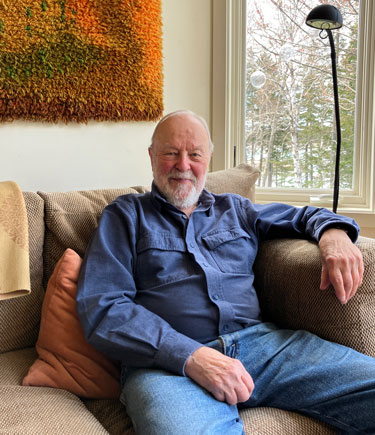
Similar to his teaching focus on furthering students’ direction, Kola sees his work as enhancing viewers’ vision. “Most people just see what they need to see. My paintings let them see through my eyes”—eyes developed through years of observing and painting. “Sometimes,” he amends, “lovers may look at each other that deeply.”
Kola’s tender intimacy with nature carries the depth of a lover’s gaze, whether of snow-covered woods or rocky shores. This is an artist as attuned to the contours of the ocean as to the mysteries of a boulder’s crevices and the drama of its coloration against a forest’s shadowy darkness.
He also sees the spaces between, where one rock might be caught above sand strewn with subtly colored pebbles, set off by a strand of luminescent seaweed. The grandeur and minutiae of our world.
The Zillman Art Museum is located at 40 Harlow St. in Bangor, open Tuesday-Saturday, 10-5. For more, call 207-581-3300.
Kola’s home gallery
Deer Isle’s Turtle Gallery is also showing Vaino Kola’s work throughout the summer. Run by Elena Kubler, now in its 42nd year, it is one of the longest-running art galleries north of Portland.
From infancy, art nurtured Kubler. Her mother, Elizabeth Bushnell Kubler, was a painter and George Kubler, her father, was a Yale University art historian who brought his family with him on research trips. The Turtle Gallery is named for the pet Kubler had while in Peru as a toddler. Later, seeking information on ancient Incan and Mexican art, they visited Europe’s many churches, crypts, libraries, and museums.
“I love, love, talking about art,” Kubler says. “Talking with people who make things, who collect, who study, and think about the origin of things—about materials and creating something from nothing.” After studying art in college and working at Haystack Mountain School of Crafts, in 1982 she opened the Turtle Gallery in downtown Deer Isle, soon moving it to where it stands today, in a barn adjacent to her home, previously the home and gallery of Haystack’s first director, Francis Merritt, and his wife Priscilla.
This summer’s exhibits include decorative ceramic pots, Japanese-style woodblock prints, furniture, jewelry, photography, sculpture, and a range of paintings and drawings from hyperreal to abstract. Among her artists is Kubler herself, whose delicate scenes created in paint, pastel, and print often connect to her dreams.
The gallery at 61 N. Deer Isle Road is open Thursday-Sunday, 11-5, and by appointment until Oct. 7. Contact Kubler at person@turtlegallery.com or 207-348-9977. Her video of Vaino Kola is at https://www.youtube.com/watch?v=R5Z9JNuTiz0.
